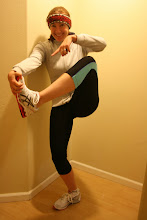Lately Dada has seemed to be experiencing a rebirth, at least as far as a curriculum in college courses go. Perhaps because at that time of its conception people were recoiling from the war, and yet again our history finds us again reacting to a wartime culture. However time and time again I read in Dadaist theory the desire to be removed from the emotional realm to an intellectual one. Dadaist also feel the need to question large intuitions like government, art museums, military, or any large establishment that is considered the authority on certain topics. It would stand to reason that emotional tactics would not be affective when challenging a predominant way of thinking.
For instance The Fountain by Duchamp is often considered the epitome of Dadaist art because he effectively pointed out that the Museum, and in a larger sense the traditional art world had a claim to defining what was and wasn’t art. The Fountain is really a statement saying to conformity you can’t tell me how to think, and what to love.
It is incredibly liberating to transform documents like court papers, teachers notes, emails, bills, and any other piece of writing into poetry, and therefore create a perspective on it. Perhaps when the artist removes himself/herself emotionally from a piece the audience suddenly has more freedom to feel whatever it is they want to without having the artist manipulate their psyche.
Here is a readymade that I have created in honor of Duchamp from The Richard Mutt Case: Looking for Marcel Duchamp’s Fountain by Mechael Betancourt. The poem is constructed from a paragraph in which Betancourt summarizes what the Fountain is. In the spirit of collage, I start with the end of the paragraph and work my way to the beginning. Because in The Fountain Duchamp chooses anonymity when signing his work, I replicate that by crossing out any mention of him or his pseudonym. The reader is asked to understand he is there but not acknowledge his presence.
Apparently there was no actual R. Mutt.
an association with the Mutt and Jeff cartoons
pseudonym of Marcel Duchamp [4] composed out of
"R. Mutt" or "Richard Mutt" is believed to be a
because of its shifted arrangement (turned sideways).
because of the added inscription "R. Mutt 1917"
. Fountain belongs in this grouping both
Nothing to do with Savagery, 1916)[3]
both have inscriptions
Comb (for dogs) (3 or 4 Drops of Height Have
(In Advance of the Broken Arm, 1915) and
color at the horizon; the "snow shovel"
(1914) he has added two small spots of
Duchamp has made an alteration: to Pharmacy
"ready-made-aided." These are objects to which Duchamp
.[2] Fountain likely belongs to the
he admits for their selection.[2]
lack aesthetic qualities: this was the sole criterion
reaction to them; for him these objects
objects based on his not having an aesthetic
Duchamp claimed to select these
applied to them. It is well-known that
categories based on the degree of alteration
the 1910s and '20s. He divides them into smaller
New York during the
"ready-mades" which Marcel Duchamp created
to a broad category of objects called
the wall becomes its base, and belongs
turned so that the surface mounted on
Fountain is a men's urinal
The original paragraph:
http://www.artscienceresearchlab.org/articles/betacourt.htm
Fountain is a men's urinal turned so that the surface mounted on the wall becomes its base, and belongs to a broad category of objects called "ready-mades" which Marcel Duchamp created in New York during the 1910s and '20s. He divides them into smaller categories based on the degree of alteration applied to them. It is well-known that Duchamp claimed to select these objects based on his not having an aesthetic reaction to them; for him these objects lack aesthetic qualities: this was the sole criterion he admits for their selection.[2] Fountain likely belongs to the "ready-made-aided." These are objects to which Duchamp has made an alteration: to Pharmacy (1914) he has added two small spots of color at the horizon; the "snow shovel" (In Advance of the Broken Arm, 1915) and Comb (for dogs) (3 or 4 Drops of Height Have Nothing to do with Savagery, 1916)[3] both have inscriptions. Fountain belongs in this grouping both because of the added inscription "R. Mutt 1917" and because of its shifted arrangement (turned sideways). "R. Mutt" or "Richard Mutt" is believed to be a pseudonym of Marcel Duchamp [4] composed out of an association with the Mutt and Jeff cartoons. Apparently there was no actual R. Mutt.
Thursday, July 23, 2009
Subscribe to:
Post Comments (Atom)

This comment has been removed by the author.
ReplyDeleteI read somewhere that the Baroness Elsa von Freytag-Loringhoven (a wonderfully colorful figure from the European and New York Dada scenes, best known for her association with American writers like W. C. Williams) laid claim to being R. Mutt, and to having come up with the urinal idea. I wouldn't be surprised if it were true or false, as she was both wildly inventive and a great exaggerater. Look her up if you haven't!
ReplyDeleteInteresting poem. I feel like there's a step still to be taken, maybe. As it stands, it's visually compelling, but still a little too identifiable with its source material to realize its potential as a fully transformed textual entity. I do really like the criteria you devise for what to include or not--as I said, perhaps you could just add one or two more rules that will really bring it over into autonomous weirdness.